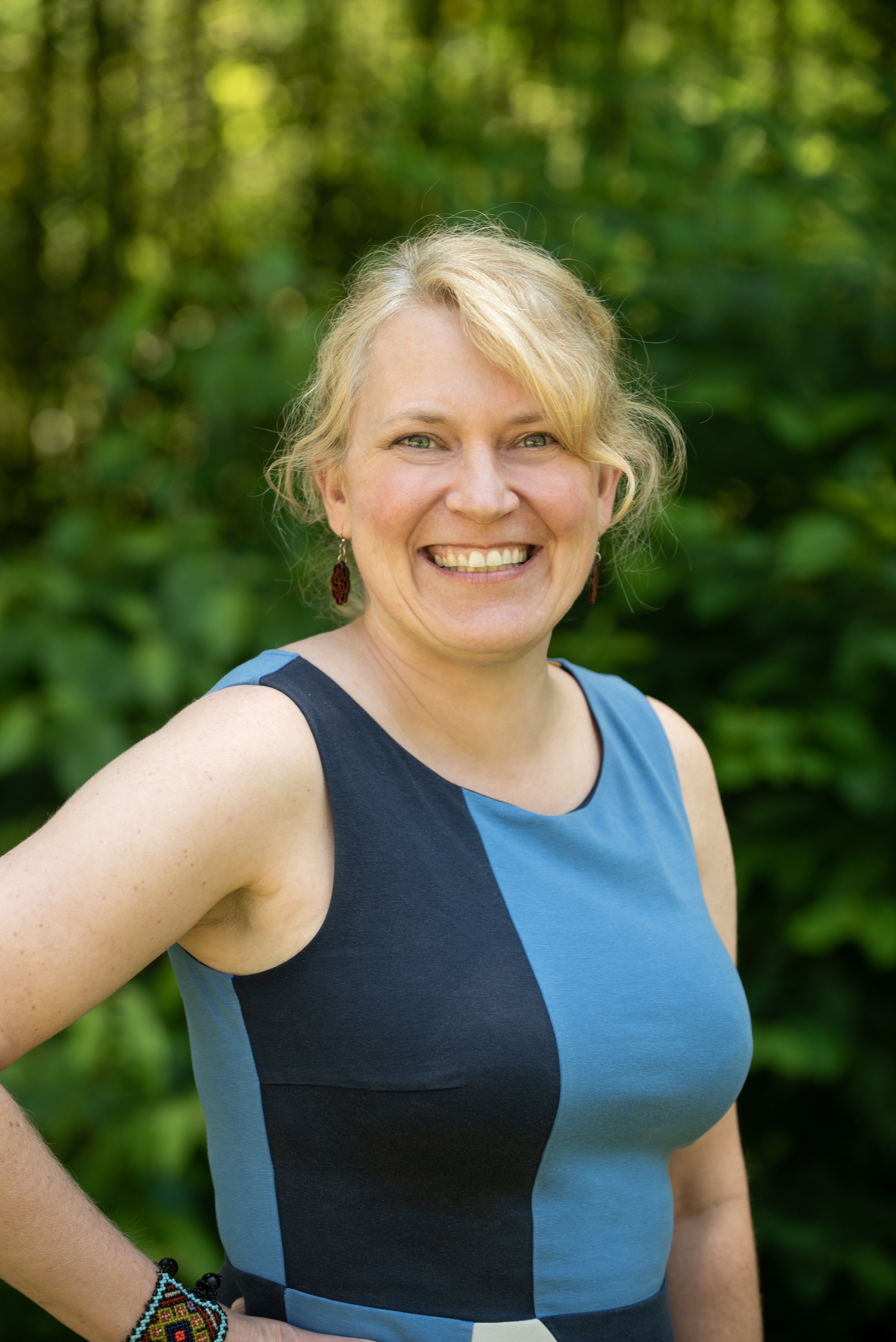Prenatal Exposures to Phthalates, Oil and Gas, and Pesticides: Effects on Birth Outcomes and Developmental Disabilities
1:00 pm US Eastern Time
Slides & Resources
Slides
Kelly Ferguson: Phthalate Exposure and Preterm Birth: Recent Findings and Future Directions.
Resources
Ferguson, K. et al. (2019). Joint impact of phthalate exposure and stressful life events in pregnancy on preterm birth. Environ International. 133(B):105254. doi: 10.1016/j.envint.2019.105254.
Ferguson, K. et al. (2019). Environmental phthalate exposure and preterm birth in the PROTECT birth cohort. Environ Int. 132:105099. doi: 10.1016/j.envint.2019.105099.
von Ehrenstein, O.S. Ling, C., Cui, X. et al. (2019). Prenatal and infant exposure to ambient pesticides and autism spectrum disorder in children: population based case-control study. BMJ. 364:l962. doi: 10.1136/bmj.l962.
UCLA, Fielding School of Public Health. Ondine S. von Ehrenstein.
Tran, K., Casey, J.A., Cushing, L.J. Morello-Frosch, R. (2020). Residential Proximity to Oil and Gas Development and Birth Outcomes in California: A Retrospective Cohort Study of 2006-2015 Births. Environ Health Perspect. 128(6). doi: 10.1289/EHP5842.
Manke, K. Living near oil and gas wells tied to low birth weights in infants. Berkeley News. June 3, 2020.
There is mounting scientific evidence linking chemical exposures in-utero to multiple adverse birth and developmental effects. Adverse birth outcomes such as preterm birth, low birth weight, and smaller size for gestational age have been associated with certain chemical and environmental exposures including phthalates, stress, and closer proximity to oil and gas wells. From 2014-2016, preterm birth rates rose by 3% [1] along with an increase in the rate of low birthweights, with low birthweight twice as high for Black infants compared to White infants. [2] Scientists have also found that prenatal exposure to pesticides is associated to developmental disabilities, including increased risk for autism spectrum disorder (ASD) in childhood. According to a CDC report, ASD prevalence has increased 10% from 2014-2016 and has nearly tripled since 2000. [3] Although the overall prevalence rate for ASD was found to be no different between Black and White children, disparities in early intervention exist with Black children less likely to be evaluated and diagnosed. [4]
During this webinar Katie Huffling, RN, MS, CNM, FAAN, moderated a discussion between Kelly Ferguson, PhD, MPH, Kathy Tran, PhD, MPH, and Ondine von Ehrenstein, PhD, MPH, MSc, who presented their research on prenatal exposures and fetal and developmental outcomes. They discussed findings that are informing new research and policies to improve birth and developmental outcomes. They also highlighted racial disparities in outcomes and how exposures might be driving some of these inequities.
Phthalate exposure and preterm birth: recent findings and future directions
Data from a number of studies have identified associations between maternal exposure to phthalates in pregnancy and preterm birth. Dr. Ferguson discussed her recent work which supports these associations, and additionally identifies a joint effect of phthalates and stress during pregnancy on prematurity. During her talk, she also highlighted important next steps, including investigating associations between preterm birth and the overall mixtures of phthalates, which she and colleagues plan to do in a new pooled study.
Residential proximity to oil and gas development and birth outcomes in California
Dr. Tran provided an overview of a study that evaluated the relationship between maternal exposure to oil and gas development and birth outcomes in California for nearly 3 million births between 2006 and 2015. Birth outcomes included low birth weight, preterm birth, small for gestational age and term birth weight. Results suggested that living near oil/gas wells in rural areas increased the likelihood of several adverse birth outcomes. Future studies are needed to confirm these findings in other populations and improve exposure assessment measures.
Developmental exposure to environmental pesticides and autism in children
Dr. von Ehrenstein gave a brief overview on what is known about exposure to environmental pesticides during early development and risks for autism. She then presented findings of a large population-based case-control study that examined associations between early developmental exposure to ambient pesticides and risks for autism spectrum disorder in childhood in California. The findings indicate that prenatal or infant exposures to commonly used pesticides are associated with increased odds of developing autism spectrum disorder. To conclude her talk, Dr. von Ehrenstein discussed the accumulating evidence indicating the need to avoid prenatal and infant exposure to pesticides to protect early brain development.
Featured Speakers
 Katie Huffling, MS, RN, CNM, FAAN, is a Certified Nurse-Midwife and the Executive Director of the Alliance of Nurses for Healthy Environments (ANHE). With ANHE, Ms. Huffling works with nurses and nursing organizations to elevate environmental health issues, such as climate change, toxic chemicals, and sustainability in healthcare, amongst the nursing profession. . In 2020 she was appointed as a member of the US Environmental Protection Agency Children’s Health Protection Advisory Council. Ms. Huffling was an editor of the environmental health e-textbook “Environmental Health in Nursing” that won the 2017 AJN Book of the Year in Environmental Health. She was also the recipient of the 2018 Charlotte Brody Award which recognizes nurses who go beyond everyday nursing endeavors to proactively promote and protect environmental health.
Katie Huffling, MS, RN, CNM, FAAN, is a Certified Nurse-Midwife and the Executive Director of the Alliance of Nurses for Healthy Environments (ANHE). With ANHE, Ms. Huffling works with nurses and nursing organizations to elevate environmental health issues, such as climate change, toxic chemicals, and sustainability in healthcare, amongst the nursing profession. . In 2020 she was appointed as a member of the US Environmental Protection Agency Children’s Health Protection Advisory Council. Ms. Huffling was an editor of the environmental health e-textbook “Environmental Health in Nursing” that won the 2017 AJN Book of the Year in Environmental Health. She was also the recipient of the 2018 Charlotte Brody Award which recognizes nurses who go beyond everyday nursing endeavors to proactively promote and protect environmental health.
 Kelly Ferguson, MPH, PhD, is an investigator in the Epidemiology Branch at the National Institute of Environmental Health Sciences. She is specifically trained in epidemiologic study design, chemical exposure assessment, reproductive health endpoints, and advanced statistical methods. She earned her M.P.H. in Occupational and Environmental Epidemiology and Ph.D. in Environmental Health Sciences from the University of Michigan School of Public Health. Her research group studies how maternal exposure to chemicals impacts pregnancy and the development of the fetus and child.
Kelly Ferguson, MPH, PhD, is an investigator in the Epidemiology Branch at the National Institute of Environmental Health Sciences. She is specifically trained in epidemiologic study design, chemical exposure assessment, reproductive health endpoints, and advanced statistical methods. She earned her M.P.H. in Occupational and Environmental Epidemiology and Ph.D. in Environmental Health Sciences from the University of Michigan School of Public Health. Her research group studies how maternal exposure to chemicals impacts pregnancy and the development of the fetus and child.
 Ondine von Ehrenstein, PhD, MPH, MSc, is Associate Professor in the Departments of Community Health Sciences and Epidemiology at the Fielding School of Public Health, University of California Los Angeles. Dr. von Ehrenstein’s research interests are in the areas of perinatal, pediatric and life course epidemiology. Her work examines various environmental and social factors in relation to pregnancy outcomes, child and adolescent health. Previous and ongoing research includes work in the US and globally with an emphasis on low resource settings.
Ondine von Ehrenstein, PhD, MPH, MSc, is Associate Professor in the Departments of Community Health Sciences and Epidemiology at the Fielding School of Public Health, University of California Los Angeles. Dr. von Ehrenstein’s research interests are in the areas of perinatal, pediatric and life course epidemiology. Her work examines various environmental and social factors in relation to pregnancy outcomes, child and adolescent health. Previous and ongoing research includes work in the US and globally with an emphasis on low resource settings.
 Kathy Tran, PhD, MPH, recently graduated with her PhD from UC Berkeley's Environmental Health Sciences program. Her dissertation explored the potential health and environmental implications of oil and gas development in California. She applied biostatistics, epidemiology and spatial analysis methods to understand the relationship between maternal exposure to oil/gas development and birth outcomes as well as characterize water-related risks. Passionate about climate change and equity issues, her previous work includes identifying risk factors for heat-related illnesses in urban slums, evaluating food access in a disadvantaged neighborhood and developing strategies to expand efforts to prevent forest fires.
Kathy Tran, PhD, MPH, recently graduated with her PhD from UC Berkeley's Environmental Health Sciences program. Her dissertation explored the potential health and environmental implications of oil and gas development in California. She applied biostatistics, epidemiology and spatial analysis methods to understand the relationship between maternal exposure to oil/gas development and birth outcomes as well as characterize water-related risks. Passionate about climate change and equity issues, her previous work includes identifying risk factors for heat-related illnesses in urban slums, evaluating food access in a disadvantaged neighborhood and developing strategies to expand efforts to prevent forest fires.
The “Generation Chemical” webinar series is brought to you in partnership with the Collaborative on Health and the Environment(CHE) and the University of California, San Francisco Program on Reproductive Health and the Environment (PRHE),the International Federation of Gynecology and Obstetrics(FIGO), Alliance of Nurses for Healthy Environments (ANHE), Endocrine Society, the International Federation of Fertility Societies (IFFS), and UCSF’s Environment Research and Translation for Health Center (EaRTH).
This webinar was moderated by Katie Huffling, RN, MS, CNM, FAAN, Executive Director the Alliance of Nurses for Healthy Environments. It lasted for 70 minutes and was recorded for our call and webinar archive.


